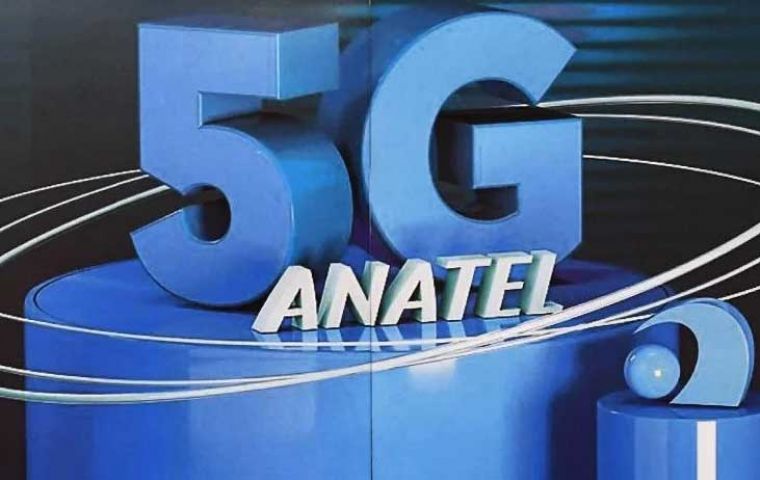MercoPress. South Atlantic News Agency
Brazil's Anatel gives nod to 5G nationwide
 Operators can start installing 5G technology but it will not be operational until 2029
Operators can start installing 5G technology but it will not be operational until 2029 Brazil's National Telecommunications Agency (Anatel) and the Band Management Entity (EAF) announced that the 3.5 gigahertz (GHz) frequency band, intended for 5G, had been “cleared” as of Monday, after the total removal of interference that prevented the activation of the signal in the 5,570 municipalities nationwide, Agencia Brasil reported.
Hence, mobile phone operators are now free to install 5G technology as per the authorization granted on Nov. 26 which could not be implemented earlier.
Before 5G, this band was used by broadcasting and open satellite television services, mainly by satellite dishes, which operated in Band C. This technology works in the 3.7 GHz to 6.4 GHz range, very close to the 5G band, it was explained.
Over the last few years, Anatel has acted on two fronts: migration from Band C and eliminating interference in the band close to 3.5 GHz. Overall, 1,482 professional satellite stations (FSS), used by radio and TV stations, distance learning institutions, and even the Air Force, which were operating in the Extended C Band, were vacated. The process ended in March this year, two years ahead of schedule.
The second stage was the cleaning of the frequency, with the installation of filters in the satellite dishes to attenuate interference from the towers on mobile devices as well as the distribution of around 4.3 million free conversion kits to families benefiting from federal social programs who depend on the traditional satellite dish to access the open TV signal.
The entire process was carried out by the EAF, the organization that brings together the telephone operators that won the 5G signal. With the release of the band, operators can install 5G technology in any city in the country, but the auction notice only establishes activation in all municipalities in 2029.
The release of the signal was completed on Monday, with the elimination of interference in 190 municipalities in Bahia. According to Anatel and EAF, the cleaning was completed 14 months in advance.
The clean-up of the Band C signal used a partnership similar to that observed in the switch-off of analog television. To free up the 700 megahertz (MHz) analog TV frequency for the adoption of 4G, cellular operators paid for the distribution of UHF antennas and digital television converters to low-income families.




Top Comments
Disclaimer & comment rulesCommenting for this story is now closed.
If you have a Facebook account, become a fan and comment on our Facebook Page!